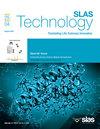BrainCNN: Automated brain tumor grading from magnetic resonance images using a convolutional neural network-based customized model
IF 3.7
4区 医学
Q3 BIOCHEMICAL RESEARCH METHODS
引用次数: 0
Abstract
Brain tumors pose a significant risk to human life, making accurate grading essential for effective treatment planning and improved survival rates. Magnetic Resonance Imaging (MRI) plays a crucial role in this process. The objective of this study was to develop an automated brain tumor grading system utilizing deep learning techniques. A dataset comprising 293 MRI scans from patients was obtained from the Department of Radiology at Bahawal Victoria Hospital in Bahawalpur, Pakistan. The proposed approach integrates a specialized Convolutional Neural Network (CNN) with pre-trained models to classify brain tumors into low-grade (LGT) and high-grade (HGT) categories with high accuracy. To assess the model's robustness, experiments were conducted using various methods: (1) raw MRI slices, (2) MRI segments containing only the tumor area, (3) feature-extracted slices derived from the original images through the proposed CNN architecture, and (4) feature-extracted slices from tumor area-only segmented images using the proposed CNN. The MRI slices and the features extracted from them were labeled using machine learning models, including Support Vector Machine (SVM) and CNN architectures based on transfer learning, such as MobileNet, Inception V3, and ResNet-50. Additionally, a custom model was specifically developed for this research. The proposed model achieved an impressive peak accuracy of 99.45 %, with classification accuracies of 99.56 % for low-grade tumors and 99.49 % for high-grade tumors, surpassing traditional methods. These results not only enhance the accuracy of brain tumor grading but also improve computational efficiency by reducing processing time and the number of iterations required.
BrainCNN:使用基于卷积神经网络的定制模型从磁共振图像中自动分级脑肿瘤。
脑肿瘤对人类生命构成重大威胁,因此准确的分级对于有效的治疗计划和提高生存率至关重要。磁共振成像(MRI)在这一过程中起着至关重要的作用。本研究的目的是利用深度学习技术开发一个自动脑肿瘤分级系统。数据集包括来自巴基斯坦巴哈瓦尔布尔Bahawal Victoria医院放射科的293例患者的MRI扫描。该方法将专用卷积神经网络(CNN)与预训练模型相结合,以高精度地将脑肿瘤分为低级别(LGT)和高级别(HGT)两类。为了评估模型的鲁棒性,我们使用了不同的方法进行实验:(1)原始MRI切片,(2)仅包含肿瘤区域的MRI片段,(3)通过本文提出的CNN架构从原始图像中提取特征切片,以及(4)使用本文提出的CNN从仅包含肿瘤区域的分割图像中提取特征切片。使用机器学习模型对MRI切片和从中提取的特征进行标记,包括基于迁移学习的支持向量机(SVM)和CNN架构,如MobileNet、Inception V3和ResNet-50。此外,还专门为本研究开发了一个定制模型。该模型达到了令人印象深刻的99.45%的峰值准确率,对低级别肿瘤的分类准确率为99.56%,对高级别肿瘤的分类准确率为99.49%,超过了传统方法。这些结果不仅提高了脑肿瘤分级的准确性,而且通过减少处理时间和所需的迭代次数提高了计算效率。
本文章由计算机程序翻译,如有差异,请以英文原文为准。
求助全文
约1分钟内获得全文
求助全文
来源期刊

SLAS Technology
Computer Science-Computer Science Applications
CiteScore
6.30
自引率
7.40%
发文量
47
审稿时长
106 days
期刊介绍:
SLAS Technology emphasizes scientific and technical advances that enable and improve life sciences research and development; drug-delivery; diagnostics; biomedical and molecular imaging; and personalized and precision medicine. This includes high-throughput and other laboratory automation technologies; micro/nanotechnologies; analytical, separation and quantitative techniques; synthetic chemistry and biology; informatics (data analysis, statistics, bio, genomic and chemoinformatics); and more.
 求助内容:
求助内容: 应助结果提醒方式:
应助结果提醒方式:


